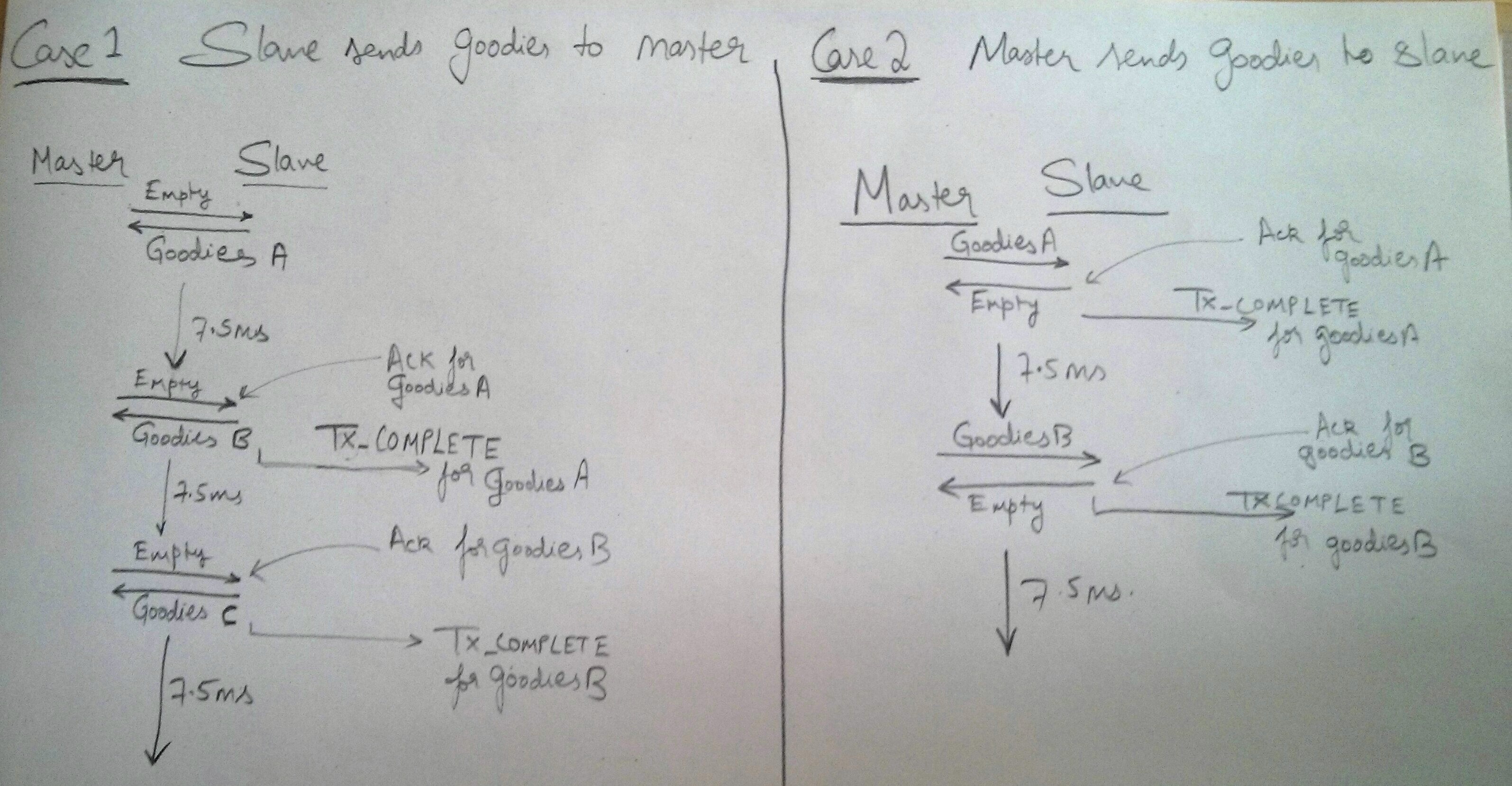Hey everyone, I'm trying to send a value as a notification packet from GATT Server (slave) to GATT client (master) at 7.5 ms connection interval. I have set up the radio notification IRQ (SW IRQ) to fire before the radio becomes active at low IRQ priority. In this routine I call the sd_ble_gatts_hvx() routine. Without the sd_ble_gatts_hvx call, I get 7.5 ms interval. But with the call I get 15 ms routine.
void RADIO_NOTIFICATION_IRQHandler(void){
//sd_ble_gatts_hvx call to send a notification
}
Is there a way send a GATT notification packet from the RADIO_NOTIFICATION_IRQHandler while still having 7.5 ms connection interval with S110 SD?
Edit: Adding that I have checked with different 'radio notification distances', from 800 us to 3260 us.
Edit 2: This behaviour is consistent even with 10 ms, 15 ms or 250 ms connection interval. I.e. the interval at which the radio notification event happens doubles when sd_ble_gatts_hvx is called in the radio notification IRQ handler.
Edit 3: Added a minimal example that has the problem mentioned in the comments.main_notify_radio_evt.c
Edit 4: Added a sniffer trace of how the notifications are sent.Sniffer_Trace.png
Edit 5: Added a small flow diagram to explain a comment.  (It'll be nice to add pics to comments)
Setup: nrf51 DK with S110 v8.0.0 in connection with nrf51 DK S120 v2.1.0. Compiled with GCC in Linux.
Thanks!
(It'll be nice to add pics to comments)
Setup: nrf51 DK with S110 v8.0.0 in connection with nrf51 DK S120 v2.1.0. Compiled with GCC in Linux.
Thanks!


